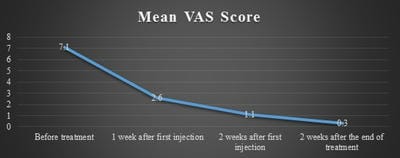The effect of Platelet-rich plasma on the repair of sports-related muscle, tendon and ligament injuries
Ligu L.1*, Jini M.2
DOI: https://doi.org/10.17511/ijoso.2020.i04.09
1* Lenin Ligu, Assistant Professor, Tomo Riba Institute of Health and Medical Sciences (TRIHMS), Naharlagun, Arunachal Pradesh, India.
2 Moji Jini, Director, Tomo Riba Institute of Health and Medical Sciences (TRIHMS), Naharlagun, Arunachal Pradesh, India.
Introduction: Platelet-rich plasma (PRP) treatment is a developing technology that ambitions to recover the procedure of tissue overhaul via the distribution of bioactive representatives, which will deliver chemotactic, proliferative, and anabolic cellular retorts and improve retrieval of tissue purpose. Materials and methods: Fifty-three recreational athletes were registered in the study. The patients were enrolled from the Emergency ward in the University Hospital at Parma rendering to a pre-defined procedure. Each patient was evaluated by ultrasound imaging to assess the range and mark of muscle harm. Only grade II lesions were preserved with 3 ultrasound-guided vaccinations of autologous platelet-rich plasma every seven days. Platelet distillate was formed as per the standard methods, with a 10% erraticism in platelet count. The platelet gel for medical use was found by addition thrombin to the distillates beneath regular circumstances. Consequences measured were: pain reduction, muscle function retrieval, and reappearance to sports activity, ultrasound-imaging tissue remedial, relapses, local contagions, and any side effect through the action. Results: In all cases muscle lesions cured completely on ultrasound-imaging, the sting vanished, and muscle function retrieval was recognized with a reappearance to sports activity. A solo patient had a reversion 1 year after cure. Conclusion: Platelet-rich plasma vaccinated into the harm site is one of the greatest significant factors interpreting the behavior operative. Rendering to the present consequences, which document complete muscle retrieval and no reversion excluding for one patient, platelet-rich plasma ultrasound-guided vaccination signifies an effective mini-aggressive cure for muscle harm.
Keywords: Platelet-rich plasma, Sports-related injuries, Tendon injury, Muscle injury
| Corresponding Author | How to Cite this Article | To Browse |
|---|---|---|
| , Assistant Professor, Tomo Riba Institute of Health and Medical Sciences (TRIHMS), Naharlagun, Arunachal Pradesh, India. Email: |
Ligu L Jini M. The effect of Platelet-rich plasma on the repair of sports-related muscle, tendon and ligament injuries. Surgical Rev Int J Surg Trauma Orthoped. 2020;6(4):270-275. Available From https://surgical.medresearch.in/index.php/ijoso/article/view/196 |


 ©
© 